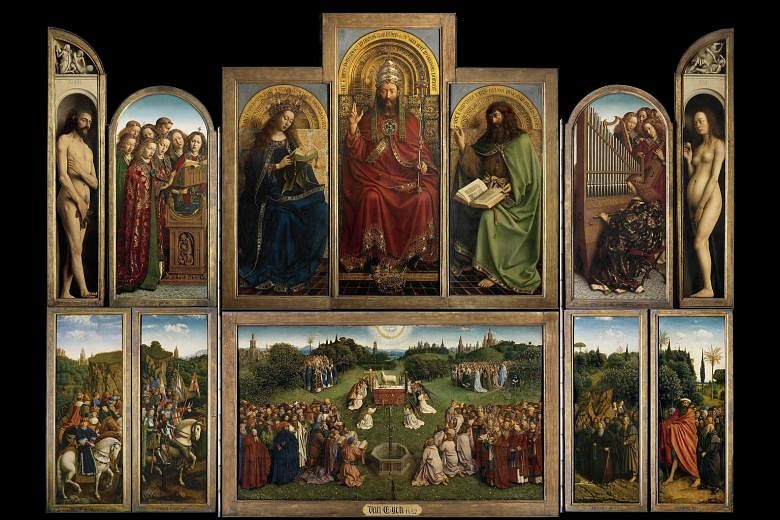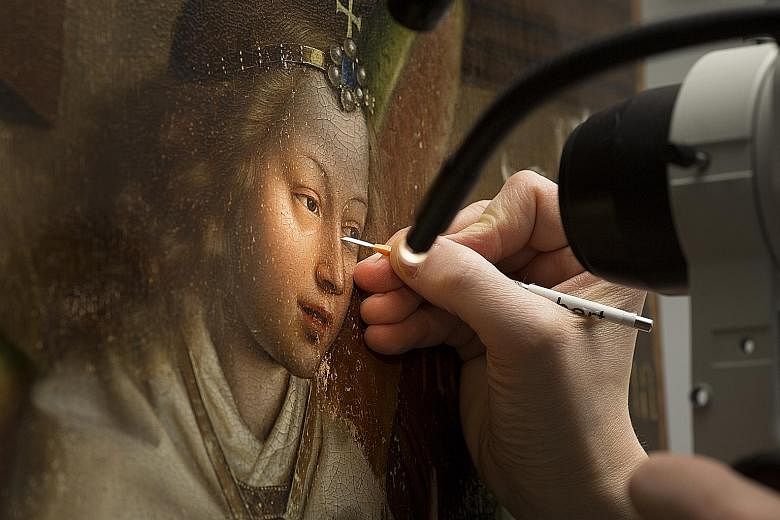GHENT, Belgium • Layers and layers of paint have been virtually and physically removed from the 15th-century Ghent Altarpiece, a renowned work of biblical figures on wood panels, revealing for the first time in centuries the individual brush strokes of the original paintings.
In this first phase of restoration on one of the earliest artworks to feature oil paints on a large scale, new scanning techniques have uncovered the singular skills of Flemish brothers Jan and Hubert Van Eyck beneath layers of overpainting and varnish.
The painstaking restoration work, which began four years ago at the Museum of Fine Arts in Ghent, has led to a number of discoveries. As an early Renaissance piece, the altarpiece is widely recognised as one of history's most influential artworks because of the intimate attention it gives to both earthly and divine beauty.
The polyptych altarpiece, consisting of 12 panels, has at its centre its most iconic panel, "The Adoration of the Mystic Lamb''. It depicts a liturgy attended by different groups of people in a landscape rich in religious symbolism. On the lower outer panels, people look on, some more interested than others.
The upper register portrays three enthroned figures: In the middle is God or Christ, flanked by the Virgin Mary and John the Baptist. Adam and Eve, in one of the earliest renderings of them naked with fig leaves, stand on the outermost wings.
The altarpiece has a dark side. Pieces have been stolen repeatedly over time, including by the Nazis, who stored the entire work in a salt mine for most of World War II.
One panel, "The Just Judges", has been missing since 1934 and has been replaced by a copy.
Restorers initially did not have permission to remove all the varnish and overpainting. But they were given the green light after new scanning technology confirmed their hunches that what lay below was far more stunning and was "with more certainty than ever" painted by the Van Eycks and finished in 1432.
NY TIMES


